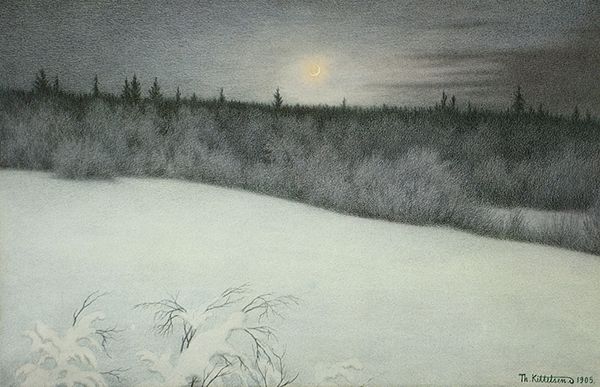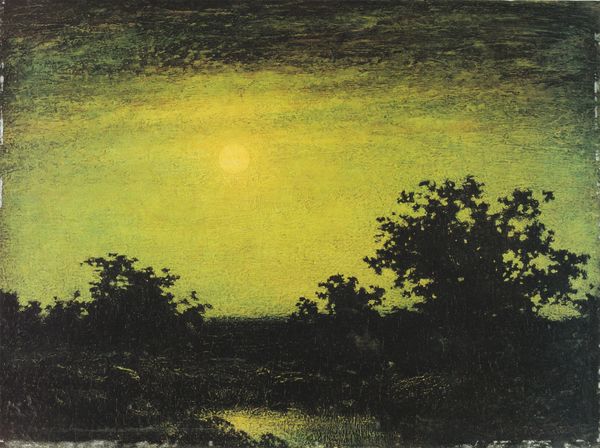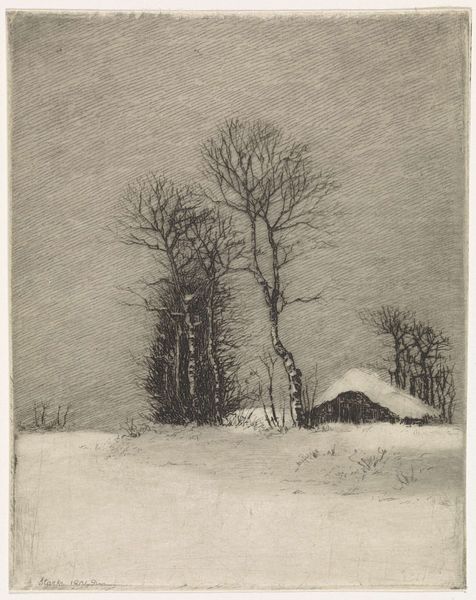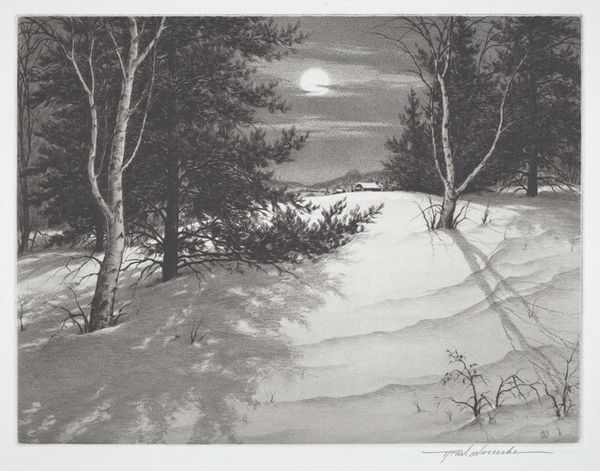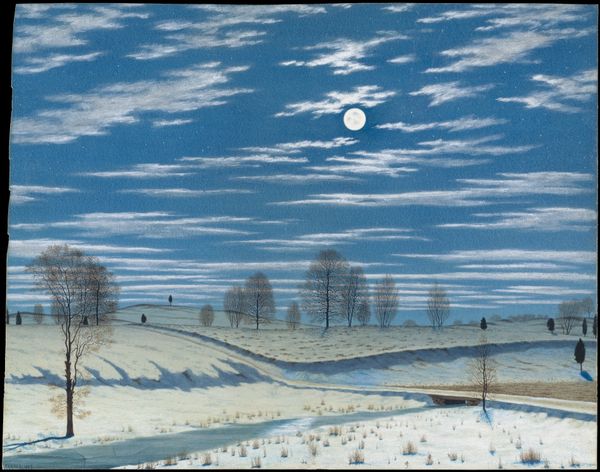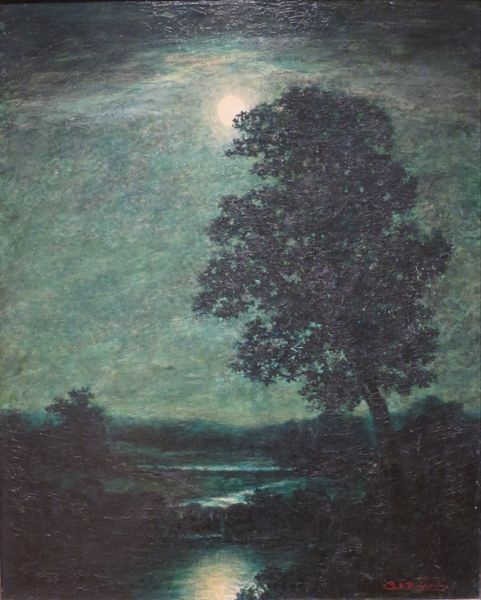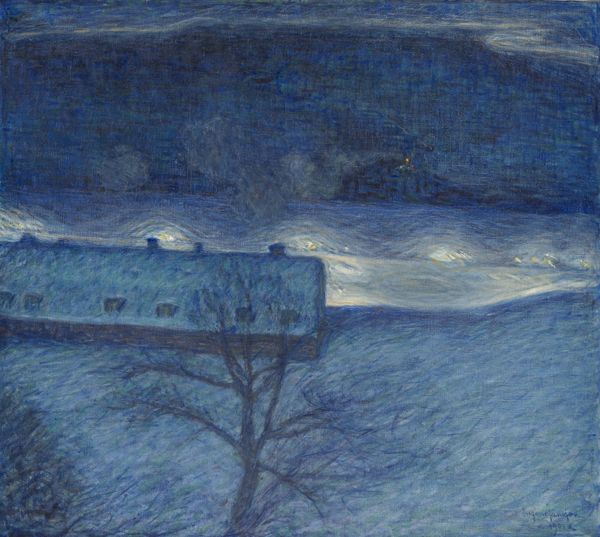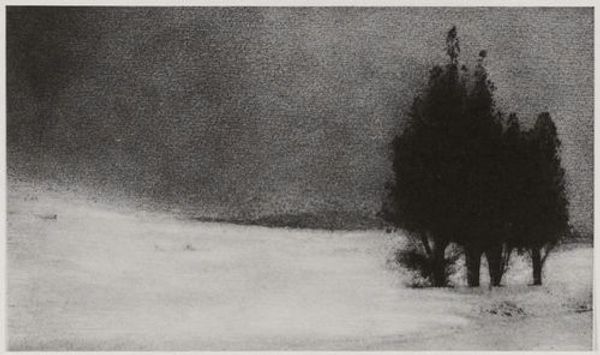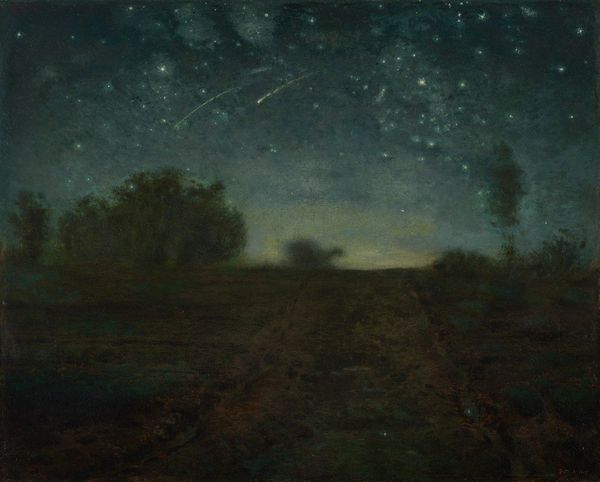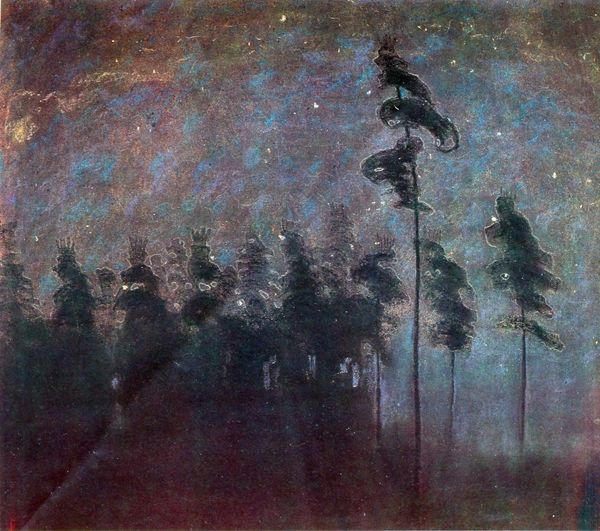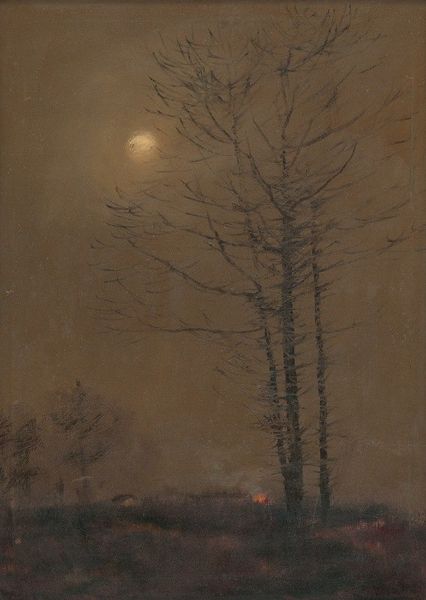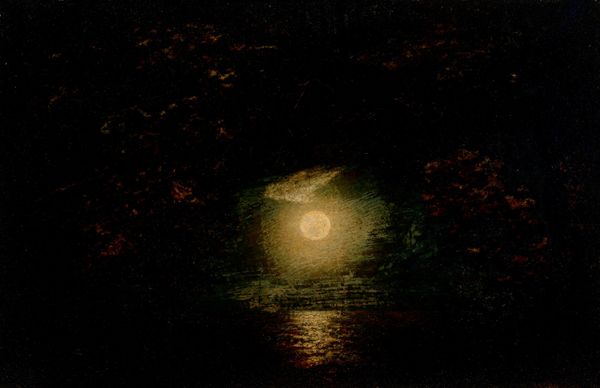
Copyright: Public domain
Editor: So, here we have Theodor Kittelsen’s “December,” a watercolor drawing from 1890. There's something so lonely and expansive about this snowy landscape beneath that impossibly starry sky. It feels both magical and a little… desolate? What do you see in it? Curator: Desolate... yes, that’s a brilliant jumping-off point! To me, Kittelsen captures the Nordic soul in winter: the deep, hushed anticipation, almost breathless under the weight of the long night. Notice how the stars aren’t just dots, they *pulse*! He lets each one be its own tiny sun, fighting back the gloom. Doesn't that light from the small house on the horizon seem vulnerable? Like a tiny promise of warmth and stories amid an unknowable expanse? Editor: It definitely does! Like a secret kept against the vastness. I hadn't really noticed how much individual attention each star has been given! Curator: Exactly! And see those bare trees reaching up like skeletal fingers? They aren’t menacing, but supplicating, perhaps? Kittelsen invites us to become aware of both fragility and grandeur intertwined. Is the landscape forbidding or inviting? Maybe it's a bit of both. He doesn't offer any easy answers, does he? Editor: Not at all! I love how much emotion is packed into something seemingly so simple. All that silence, but so much feeling. Curator: Yes, that "simplicity" is deceptive. The real art is evoking those deeper currents. It's less about seeing, and more about *feeling*, wouldn't you agree? Editor: Absolutely. Thanks for pointing all of that out. I see it completely differently now, much more than just a landscape! Curator: My pleasure! And isn’t that the wonderful thing about art? There’s always a new way to feel what’s been in front of us all along.
Comments
No comments
Be the first to comment and join the conversation on the ultimate creative platform.
